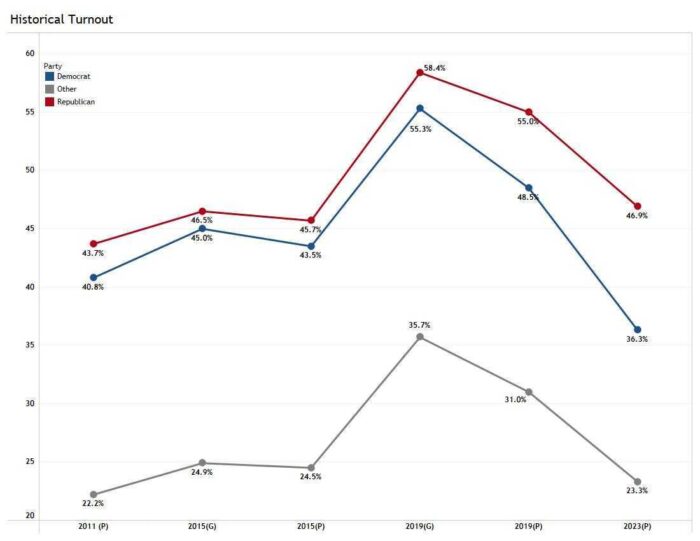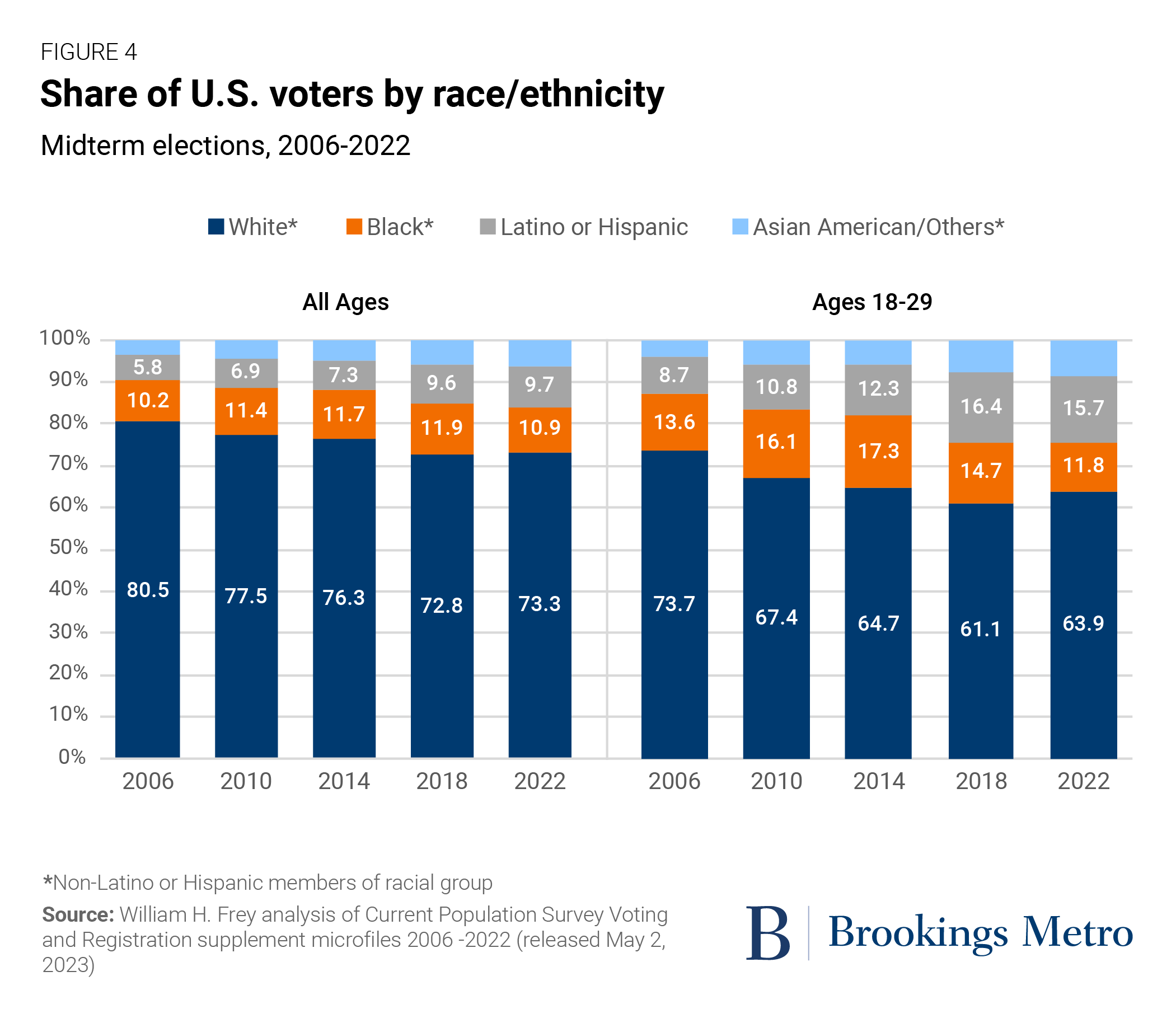Implementing A Robust Poll Data System For Accurate Election Results

Table of Contents
Data Collection & Security
The foundation of any accurate election result is a secure and efficient data collection process. Compromised or manipulated data can lead to inaccurate results and undermine public trust. Therefore, a robust poll data system must prioritize security at every stage of data collection.
Secure Data Entry Methods
Secure data entry is paramount. A multi-layered approach is necessary to prevent fraud and manipulation. This includes:
- Secure Online Portals: Utilizing encrypted online portals with strong authentication protocols like two-factor authentication (2FA) minimizes the risk of unauthorized access.
- Offline Data Entry with Verification: Offline data entry with rigorous verification mechanisms, including checksums and manual cross-checking, provides a backup system and minimizes reliance on internet connectivity.
- Biometric Authentication: Employing biometric authentication methods, such as fingerprint or iris scanning, adds an extra layer of security, especially for sensitive roles like poll worker authentication.
Potential vulnerabilities include phishing attacks targeting poll workers and SQL injection vulnerabilities in online portals. Mitigation strategies involve rigorous security training for staff, regular security audits, and the implementation of robust web application firewalls (WAFs).
Real-time Data Validation
Real-time data validation is crucial for identifying and correcting errors immediately. This prevents the propagation of inaccurate data throughout the system. Techniques include:
- Range Checks: Ensuring data falls within predefined acceptable ranges (e.g., vote counts cannot exceed the number of registered voters).
- Consistency Checks: Verifying data consistency across different data sources. For example, ensuring that the total number of votes cast matches the number of ballots received.
- Plausibility Checks: Identifying outliers or statistically improbable data points that might indicate manipulation or error.
Real-time validation dramatically reduces the workload during post-election data cleaning and increases the speed and accuracy of results reporting. Data scrubbing, a process of cleaning and standardizing data to remove duplicates and inconsistencies, should be integrated into this real-time process.
Data Storage & Management
Effective data storage and management are critical for the long-term integrity and accessibility of election data. The system must be scalable to handle large volumes of data and robust enough to withstand potential disruptions.
Choosing the Right Database
The choice of database system significantly impacts the performance and scalability of the poll data system. SQL and NoSQL databases offer different advantages:
- SQL Databases: Offer structured data management, ensuring data integrity and facilitating complex queries. They are well-suited for relational data, such as voter registration information.
- NoSQL Databases: Provide greater flexibility and scalability, making them suitable for handling large volumes of unstructured or semi-structured data, like social media sentiment analysis related to the election.
The optimal choice depends on specific requirements and the scale of the election. Factors to consider include scalability, query speed, data security, and the expertise of the technical team.
Data Backup and Disaster Recovery
Data loss can have catastrophic consequences. Therefore, robust backup and disaster recovery strategies are essential. This includes:
- Cloud Backups: Replicating data to a secure cloud storage solution offers redundancy and protection against physical damage.
- Geographically Dispersed Servers: Storing data across multiple geographically separated servers minimizes the impact of localized disasters.
- Regular Data Backups: Implementing a schedule for regular data backups ensures that data loss is minimal in the event of a system failure.
Regular disaster recovery testing is crucial to ensure that backup and recovery processes function as intended. This helps to identify and address any vulnerabilities before a real disaster strikes.
Data Analysis & Reporting
Accurate data analysis and reporting are vital for transparency and public confidence. The system should leverage advanced analytics to ensure accurate results and provide valuable insights.
Advanced Analytics for Accurate Reporting
Modern data analysis techniques can significantly enhance the accuracy and efficiency of election results reporting. These include:
- Outlier Detection: Identifying unusual data points that might indicate fraud or errors.
- Trend Analysis: Identifying patterns and trends in voting data to gain insights into voter behavior.
- Predictive Modeling: Using machine learning to forecast election outcomes based on historical data and current trends.
Clear and understandable data visualizations are crucial for effectively communicating election results to the public. Interactive dashboards and maps can significantly improve accessibility and understanding.
Transparency and Public Access
Transparency is key to building public trust in election results. The system should facilitate public access to election data while ensuring data privacy and security. This includes:
- Open Data Portals: Creating publicly accessible portals where election data can be downloaded and analyzed.
- APIs: Providing application programming interfaces (APIs) allowing third-party developers to access and analyze election data.
Data anonymization techniques should be employed to protect voter privacy while still allowing access to aggregated and useful data for analysis. Careful consideration of data privacy regulations and security best practices is critical.
Conclusion
Implementing a robust poll data system is crucial for ensuring accurate and transparent election results. By combining secure data collection methods, efficient data management techniques, and advanced data analytics, election authorities can build a system that promotes trust and confidence in the electoral process. Investing in a robust poll data system is an investment in the integrity of democratic processes. Therefore, it's crucial to prioritize the development and implementation of a truly effective robust poll data system, ensuring that future elections are fair, transparent, and accurately reflected.

Featured Posts
-
 Burlington Play Reading Group Celebrates 135 Years
May 02, 2025
Burlington Play Reading Group Celebrates 135 Years
May 02, 2025 -
 Fortnite Cowboy Bebop Collaboration Free Rewards Available For A Short Time
May 02, 2025
Fortnite Cowboy Bebop Collaboration Free Rewards Available For A Short Time
May 02, 2025 -
 Preparing Your Business For Dragons Den
May 02, 2025
Preparing Your Business For Dragons Den
May 02, 2025 -
 Gops North Carolina Supreme Court Loss Implications Of The Appeal
May 02, 2025
Gops North Carolina Supreme Court Loss Implications Of The Appeal
May 02, 2025 -
 Florida And Wisconsin Turnout A Deep Dive Into The Current Political Landscape
May 02, 2025
Florida And Wisconsin Turnout A Deep Dive Into The Current Political Landscape
May 02, 2025
Latest Posts
-
 Understanding The Political Climate Voter Turnout In Florida And Wisconsin
May 03, 2025
Understanding The Political Climate Voter Turnout In Florida And Wisconsin
May 03, 2025 -
 Unexpected Defeat Abu Jinapors Assessment Of The Npps 2024 Performance
May 03, 2025
Unexpected Defeat Abu Jinapors Assessment Of The Npps 2024 Performance
May 03, 2025 -
 Understanding The Gop Candidates Appeal In The Nc Supreme Court Race
May 03, 2025
Understanding The Gop Candidates Appeal In The Nc Supreme Court Race
May 03, 2025 -
 Florida And Wisconsin Voter Turnout Key Indicators Of The Shifting Political Moment
May 03, 2025
Florida And Wisconsin Voter Turnout Key Indicators Of The Shifting Political Moment
May 03, 2025 -
 Analyzing The 2024 Midterm Elections Voter Turnout In Florida And Wisconsin
May 03, 2025
Analyzing The 2024 Midterm Elections Voter Turnout In Florida And Wisconsin
May 03, 2025
